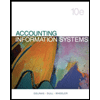
Internal Control: Internal control refers to the policies, and plans of the business organization along with other measures with a view to safeguard its assets, encourage the employees to adhere to the plans, to improve on the operational efficiency, and to ensure correct and reliable accounting information. Internal control is a process which ensures continuous reliability of accomplishment of a company’s objectives, related to operations, financial reporting, and in conformity with laws and regulations.
Five elements of internal control:
- Control Environment: Control Environment refers to the attitude of top brass of the company or the corporate culture. The top brass of the company must set the tone to improve the morale for rest of the employees of the business.
- Risk assessment: The business must be able identify the risk associated with it, and accordingly use the internal control to safeguard its assets and ensures fairness in presentation in accounting information.
- Control procedures: The objective of setting the control procedure is to ensure that the business achieves its objectives.
- Monitoring controls: The internal control used in the business is being monitored by the internal auditors who are hired by the business, to ensure that the employees are adhering to the policies of the business and running the operations efficiently. The external auditors on the other hand ensures that the business accounting records are being maintained in accordance with the Generally Accepted Accounting Principles (GAAP).
- Information and communication: Information and communication system is important for a business and hence only authorized persons should be allowed the access to the confidential accounting information. Approvals are also should be made mandatory for the transactions by the
control system.
Given: WH Company has installed self-check-out lanes.
To prepare: Brief memo to the instructor suggesting features and capabilities for K that serve as control procedure.
Trending nowThis is a popular solution!

Chapter 8 Solutions
Bundle: Accounting, 27th + Working Papers, Chapters 1-17
- Can you explain the process for solving this financial accounting question accurately?arrow_forwardWhat is managerial accounting provide full explanation.arrow_forwardBrilliant Professor Martin Company has an activity cost pool for inspecting, with an estimated overhead of $240,000. It produces kitchen rugs (2,000 inspections) and bathroom rugs (2,500 inspections). How much of the inspecting cost pool should be assigned to kitchen rugs?arrow_forward
- Calculate Brixton cost of goods sold for 2023.arrow_forwardOn May 1, the cash account balance was $42,580. During May, cash receipts totaled $387,920 and the May 31 balance was $31,750. Determine the cash payments made during May.arrow_forwardI am looking for help with this financial accounting question using proper accounting standards.arrow_forward
 Pkg Acc Infor Systems MS VISIO CDFinanceISBN:9781133935940Author:Ulric J. GelinasPublisher:CENGAGE L
Pkg Acc Infor Systems MS VISIO CDFinanceISBN:9781133935940Author:Ulric J. GelinasPublisher:CENGAGE L Accounting Information SystemsAccountingISBN:9781337619202Author:Hall, James A.Publisher:Cengage Learning,
Accounting Information SystemsAccountingISBN:9781337619202Author:Hall, James A.Publisher:Cengage Learning, Auditing: A Risk Based-Approach to Conducting a Q...AccountingISBN:9781305080577Author:Karla M Johnstone, Audrey A. Gramling, Larry E. RittenbergPublisher:South-Western College Pub
Auditing: A Risk Based-Approach to Conducting a Q...AccountingISBN:9781305080577Author:Karla M Johnstone, Audrey A. Gramling, Larry E. RittenbergPublisher:South-Western College Pub


